Table of Contents
Don’t let these mistakes rob your mobility gains
Pelvic tilts are commonly prescribed to improve range of motion in a variety of areas, but you know what is even more common?
Screwing up pelvic tilt form.
In fact, these 4 mistakes will pretty much make the technique useless.
But don’t you worry, I’ll help you navigate these common mistakes so you can get the most out of pelvic tilts, improve your range of motion, and feel better than ever before!
Check out the post, video, and podcast to learn more!
Tucking when you don’t need to
SPOILER ALERT – Not everyone needs to tuck the hips.
Blasphemy, right? Not really.
You see, the pelvic tilt aims at improving external rotation-based measures (decreased flexion, abduction, and external rotation).
If you are someone who “has” external rotation and needs internal rotation, then tucking could actually magnify the restriction.
To determine if you are someone who needs to tuck, the easiest way to tell is by looking at the following measures:
- Straight leg raise (SLR): Normal is 70º-90º
- Hip external rotation: Normal is 60º
- Hip internal rotation: Normal is 40º
You SHOULD tuck if:
- Normal/excessive SLR
- Limited hip external rotation
You SHOULD NOT tuck if:
- Limited SLR
- Limited hip internal rotation
Overtucking
If you think you need a large movement at the hips to pelvic tilt correctly, think again.
The tuck itself is quite subtle. You only want to isolate the action as best as possible to the pelvis. Done right, you’ll often get glute and hamstring engagement.
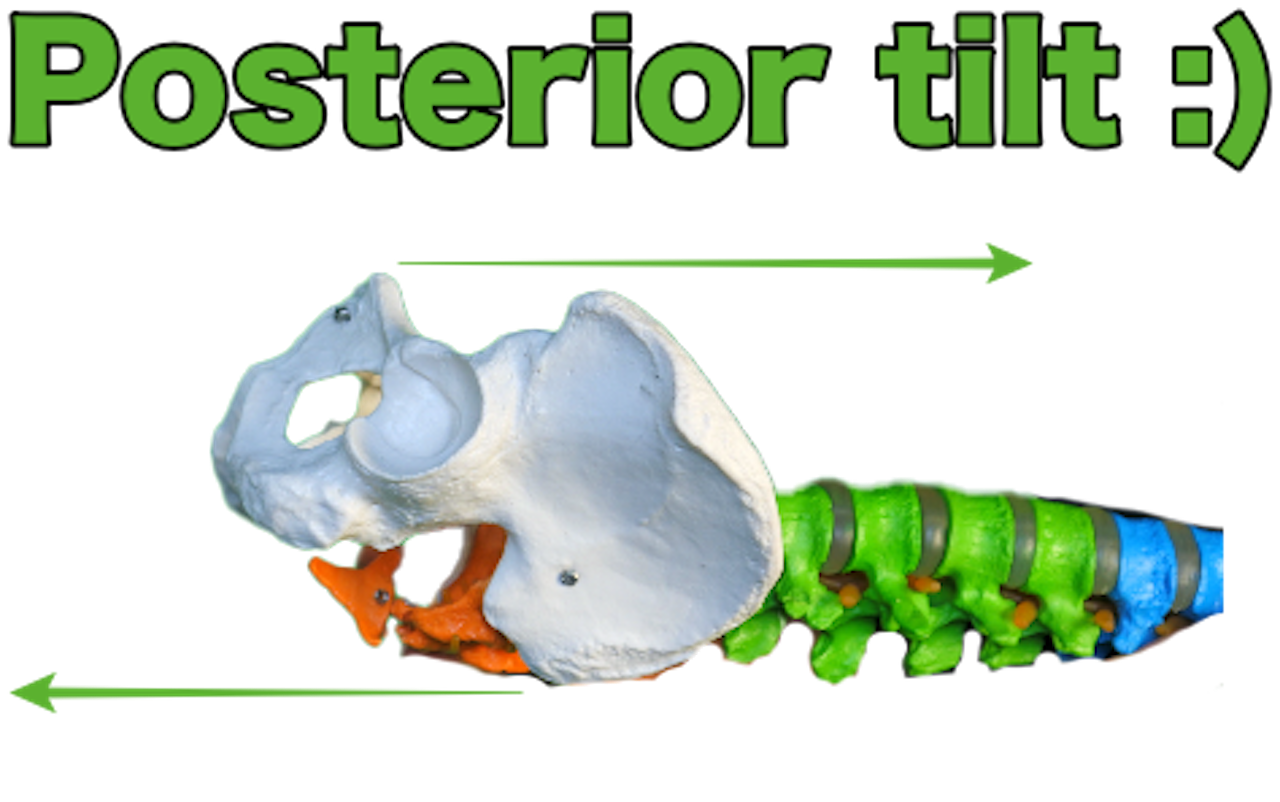
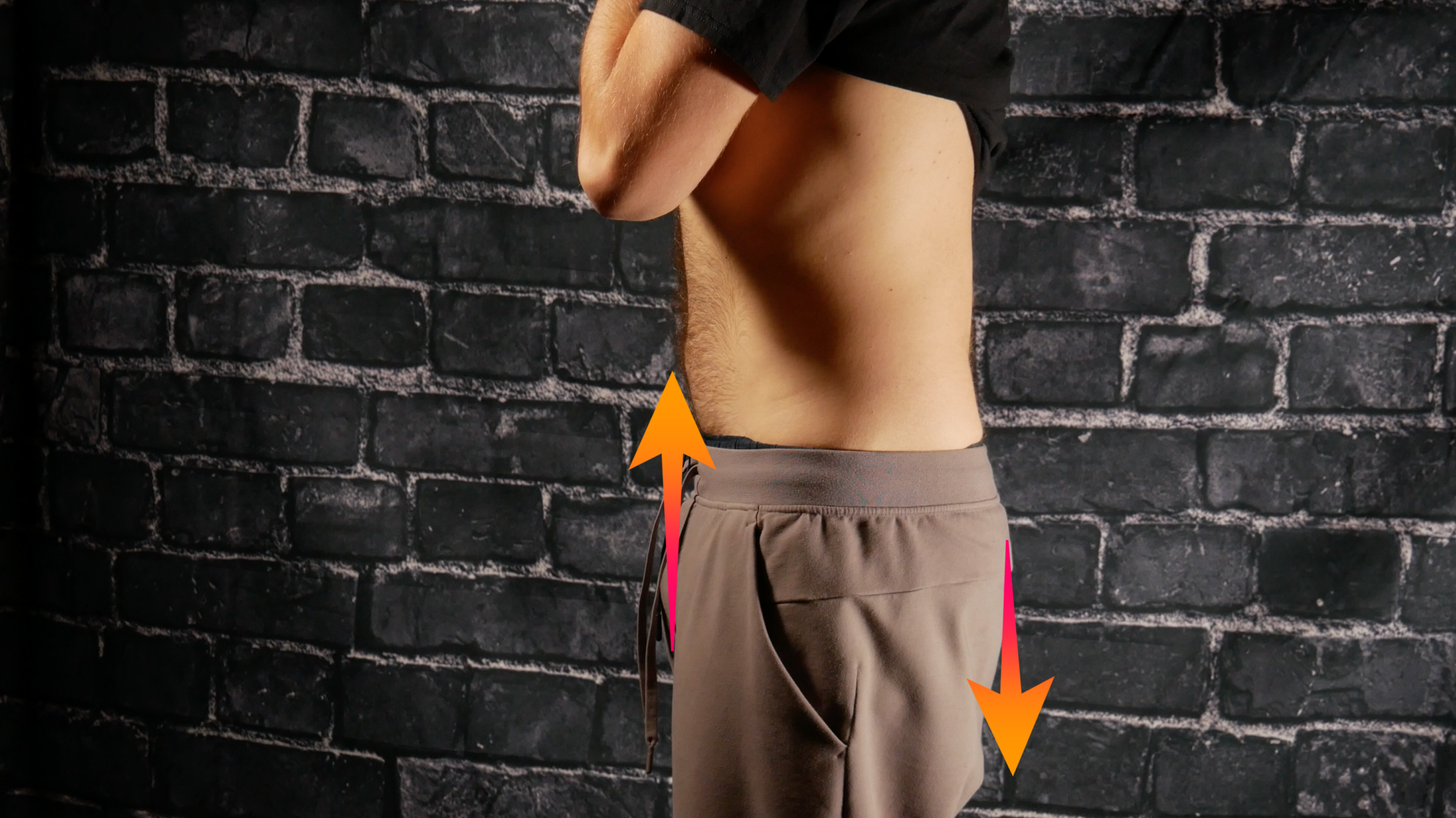
What most people do, however, is perform the pelvic tilt through the lumbar spine (lower back).
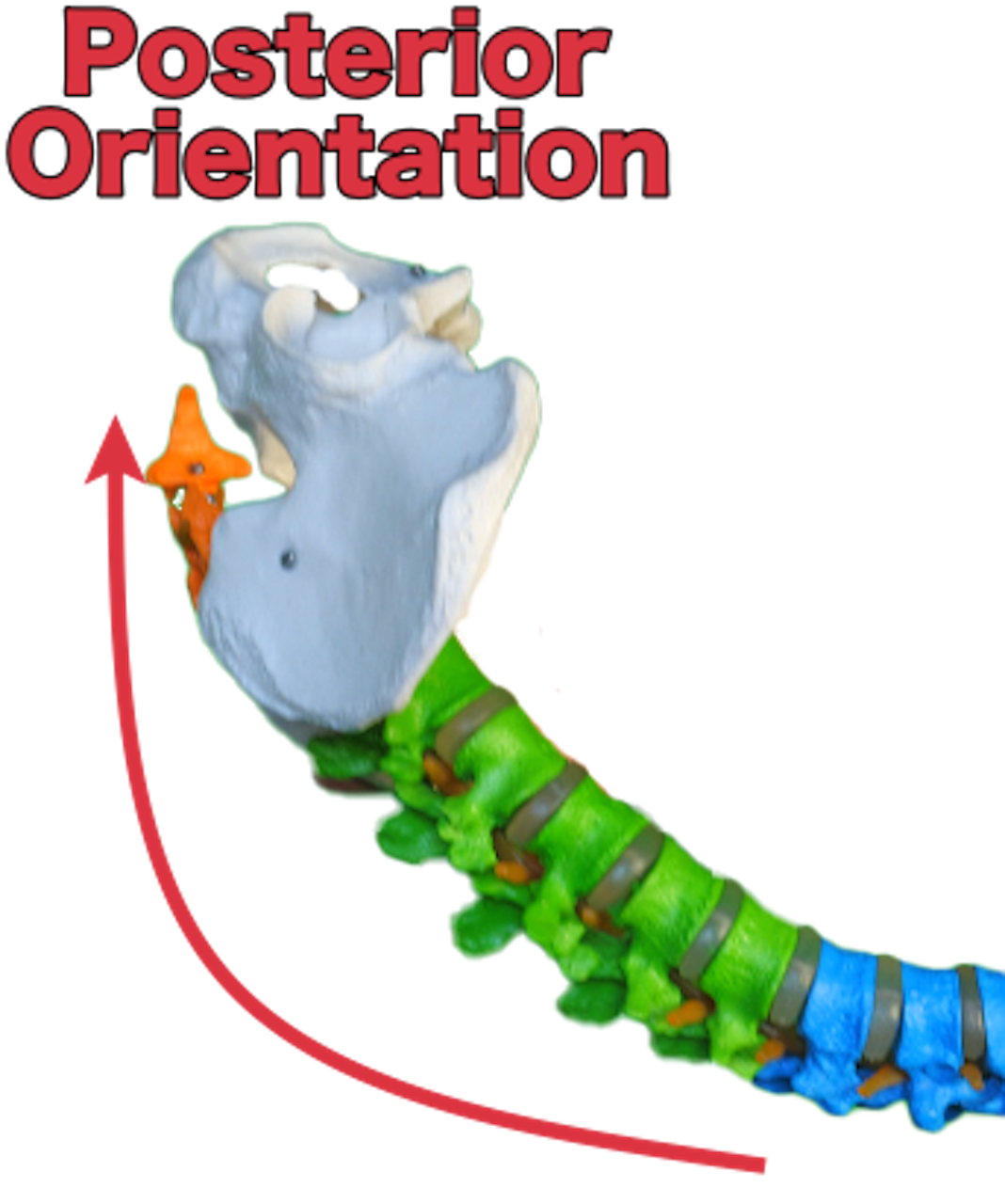

When this happens, you cannot attain any movement improvements because the normal sacral dynamics are not as readily performed.
How do you know if you are tucking through the lumbar spine? The pelvis will sway forward and backward.
Conversely, a pelvic tuck is more of an up and down movement of the pelvis.
Using abs to tuck
The reason a tuck occurs is to promote the abdominal contents (the guts) moving upward and downward. This action can aid in improving mobility in the pelvis and torso.
What happens if you use the abs to tuck though?
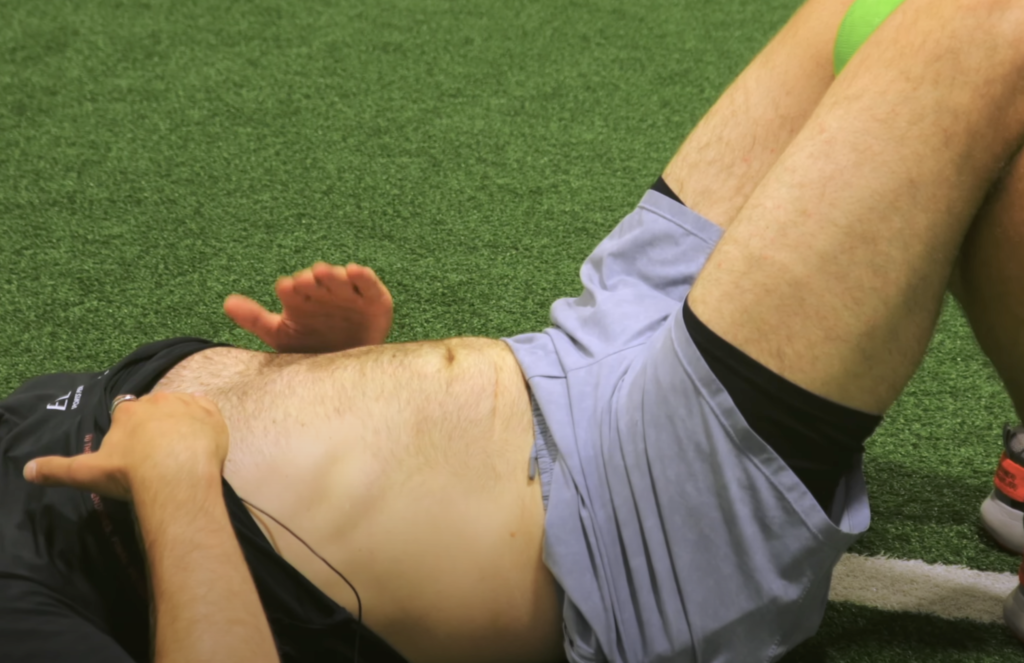
Well, not the above. The abs squeeze the abdominal wall, which when done without an effective exhale, pushes the guts downward, limiting upward gut movement in the process.
Put simply, it limits the dynamics we are trying to improve are limited if the abs are used to perform the pelvic tilt.
If you tuck without the abs, however, you then position the pelvis in a manner that allows this gut movement to occur.
Tucking WITHOUT using breathing
You’ve been hearing hints, but now let’s drop it:
Movement changes occur from breathing, NOT from tucking.
Therefore, if you are tucking with reckless abandon and you DO NOT nail the breathing sequence, your results will be lackluster.
The tuck merely sets the stage to use breathing to make the mobility changes.
Here are the keys:
- SUBTLE tuck without engaging abs
- Silent nasal in
- Slow and easy exhale. Feel lower abs get smaller (after 4-8 breaths, lower ribcage will drop backward)
- repeat
This video below has a great example of this:
Sum up
If you avoid making these mistakes, you will get WAY more out of any pelvic tilt-based exercise.
To recap:
- Tuck ONLY if you have a “normal to excessive” SLR and hip external rotation is limited
- The tuck is subtle up and down, does not involve lower back
- Abs stay relaxed during the tuck
- If you don’t breathe during the tuck, c’mon fam!
What struggles have you had performing the tuck? Comment below and let the fam know!

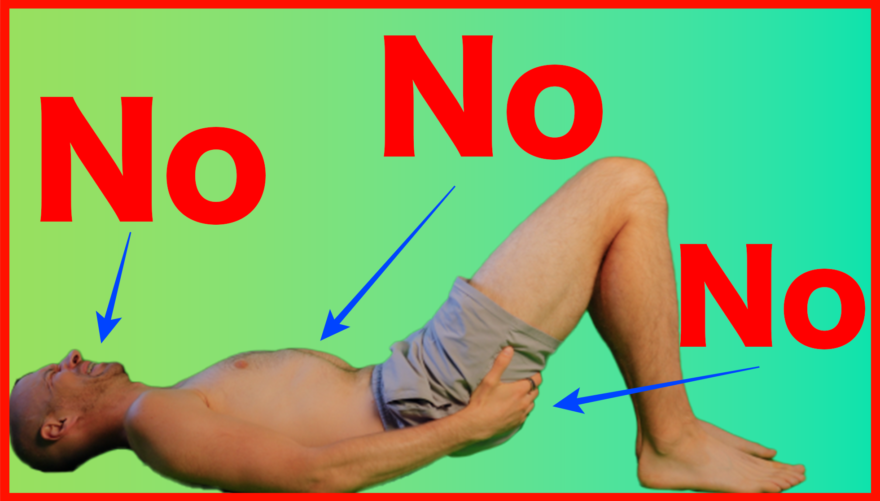
7 responses to “Pelvic Tilts – 4 Mistakes That RUIN the Benefits”
I just watched this video. When I tested my Hip ER/IR, my IR is very limited. Up to this point I have been tucking because I did have an anterior pelvic tilt. So, after watching this I am not sure I need to any more. So should I stop hip tucking? What should I do about getting more range of motion on my Hip IR?
I would follow what is in here – https://zaccupples.com/rib-flare/
If you have IR loss, then not a traditional tilt, but the pelvis shifts forward. This would help also – https://zaccupples.com/fix-posterior-pelvic-tilt/
Hey Zach interesting post. Could you unpack the first one “tucking when you’re not supposed to”? Do you define the tuck differently than PRI does? Everything you wrote makes sense with sacral counter notation and ilia flexion and external rotation. But it contradicts PRI objective tests which has shown to be very impressively effective assessment and treatment protocol/model.
Not exactly sure how PRI defines the tuck. When I think of tuck, I think of posteriorly orienting pelvis. Counternutation and nutation will occur with breathing.
Could you expand upon the contradictions re: PRI? I have some disagreements biomechanically with them and my current approach is different than what they offer.
Hey Zack Attack the most trusted man on the world wide sports, whoops, the internet the Al Globalist jihadi Gore ” invented” . Now seriously your superlative logical discourse and selfless edification is saint Tomas Aquinas as I am to the late Archie Bunker struggling with the Nixon doctune of detente, Rangan supply side economics and our greatest president Don Trump’s America first doxology. Suffice to say as the aforementioned statesman your damn sure their leagues. HOOK EM and MAGA cause you are equal to the tasks daily
hahahahaah my dude. You are too kind. Thank you for your support per usual. First time I’ve been compared to a saint LOL
Hey ZC, Do you use tilt and stack interchangeably or are they differentl?